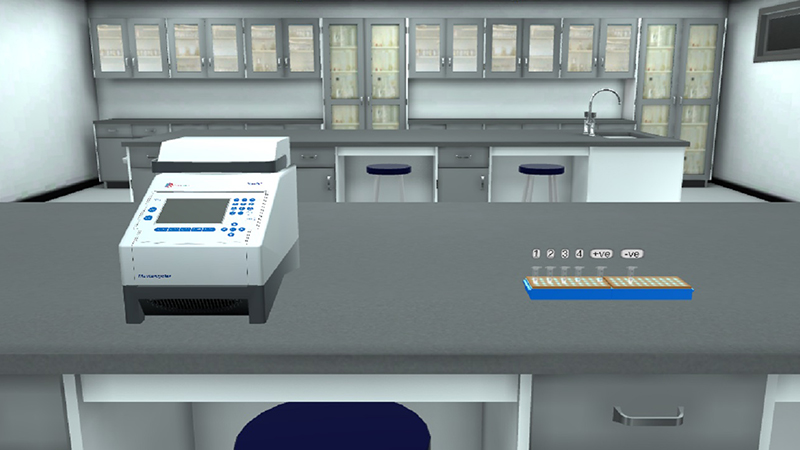Conventional PCR Theoretical Background
Conventional Polymerase Chain Reaction is a technique for in vitro amplification of a specific short defined segment of DNA. Most PCR methods typically amplify DNA fragments of up to ~10kb. In a test tube, A pair of oligonucleotide primers directs the polymerase enzyme and the deoxyribonucleotides to a specific gene in the DNA sample. A replication like process occurs in cycles. This repetition results in DNA amplification and as much as a billion copies can be the result of 30 cycles. Therefore, minimal amounts of DNA can be detected.
What Is the Conventional PCR Principle of Work?
A conventional PCR setup requires several components and reagents. These components include :
- Two primers (Forward and reverse).
- Taq polymerase.
- Deoxynucleoside triphosphates (dNTPs).
- Buffer solution.
- Distilled water.
- Template DNA.
The Conventional PCR steps are as follows:
- Denaturation: high temperature (95 degree centigrade) allows the separation of the two DNA strands due to break down of hydrogen bonds linking bases together.
- Primer annealing: primers are short, synthetic sequences of single-stranded DNA typically consisting of 20-30 bases. Annealing usually takes place between 40 degrees Centigrade and 65 degrees centigrade, depending on the length and base sequence of the primers.
- Extension (elongation): Taq polymerase is a recombinant thermo-stable DNA polymerase, from the organism Thermus aquaticus. It is active at high temperatures. Temperature is raised at this stage to 72 degree centigrade and complementary dNTPs are added starting the 3’ end of the primer. Hence; Taq DNA polymerase synthesized in the 5’-3’ direction.



















